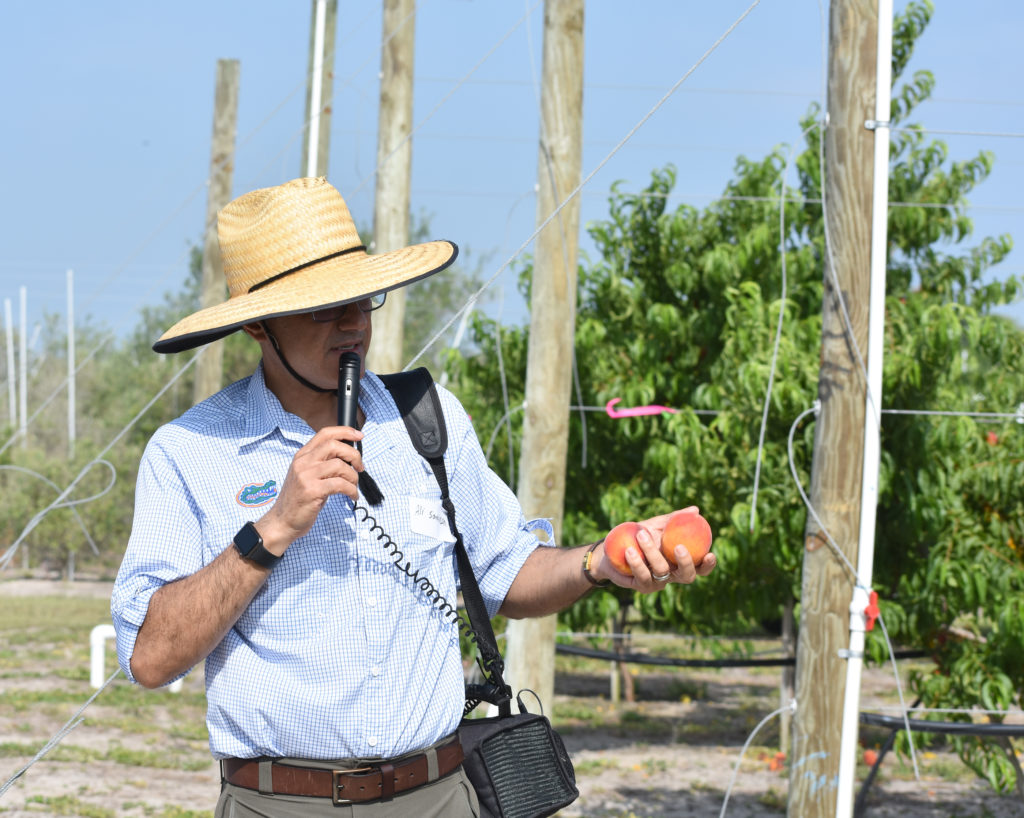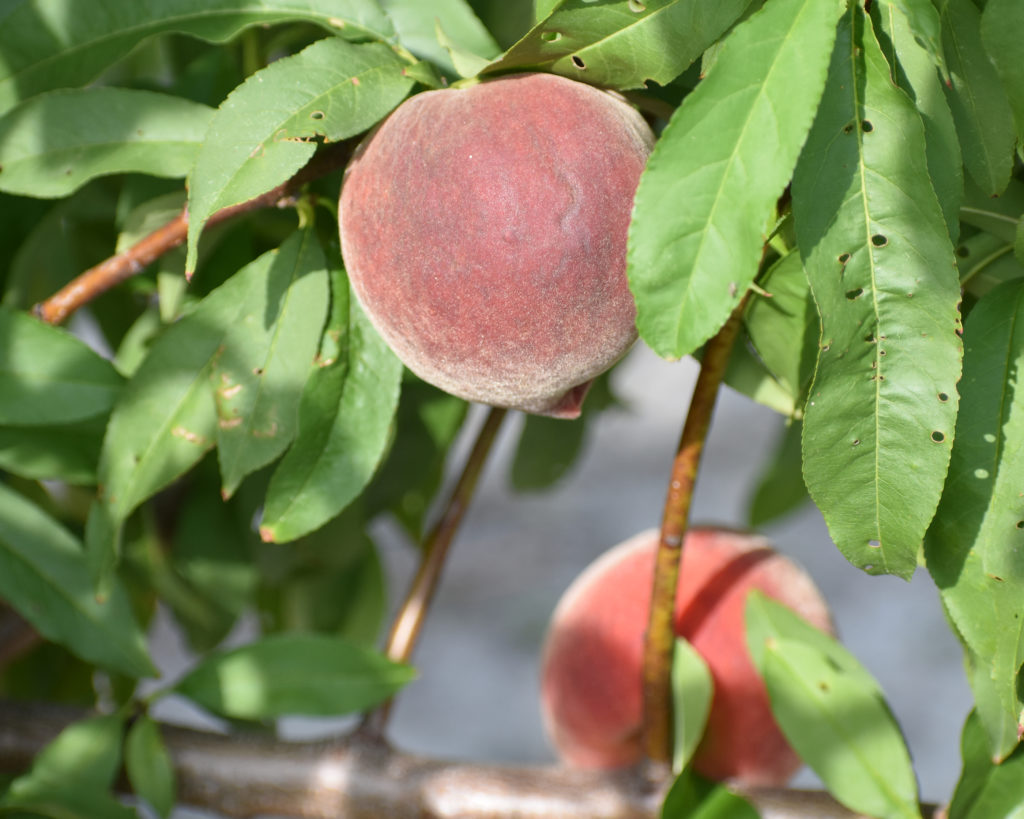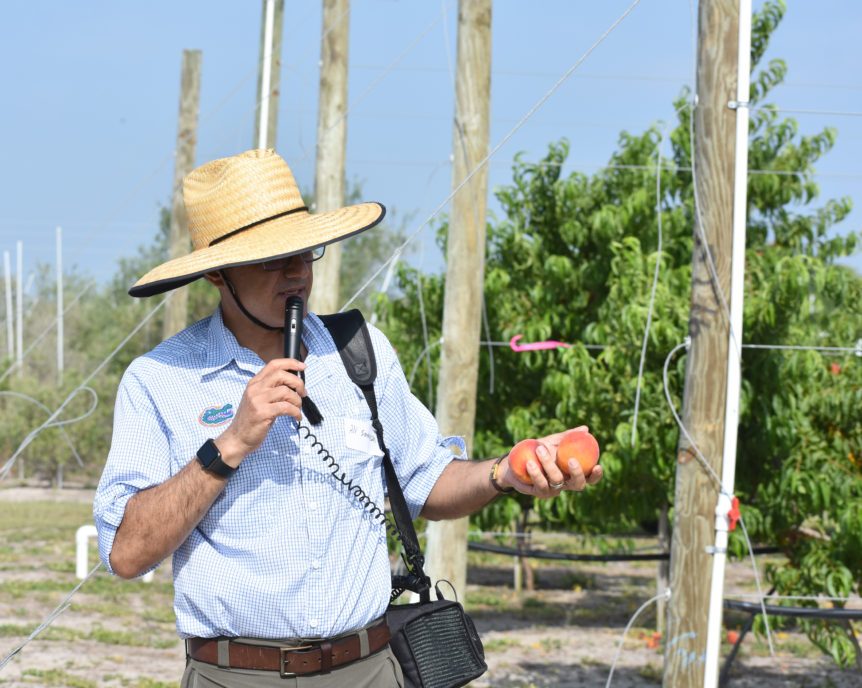
By Clint Thompson
The Stone Fruit Field Day at the University of Florida Institute of Food and Agricultural Sciences (UF/IFAS) Plant Science Research and Education Unit in Citra, Florida, on May 7 introduced attendees to the future of the state’s peach production.
Research plots focused on peach production in high density orchards. It’s a research study that highlights more planted trees, increased yields and automation to handle more of the manual labor tasks associated with peach production, specifically pruning.
Ali Sarkhosh, UF/IFAS assistant professor in horticultural sciences, led Florida growers on a tour of the high density orchards.

“The high-density research is to see how we can cut labor costs. Labor costs are one of the big issues for the peach grower,” Sarkhosh said. “We need to produce a fresh product for the supermarket. They’re always looking for a product that is (high quality). Growers have to spend a lot of time on pruning and fruit thinning. We’re hoping this high density can incorporate more machinery, mechanization and reduce the labor costs.”
Research Specifics
The high-density (fruiting wall) orchards allow for 280 trees per acre at a spacing of 12×13 feet, compared to traditional orchards that allow for 136 trees per acre at a spacing of 16×20 feet. The setup is ideal for machines to prune much of the trees, reducing the time and labor needed for an important time of peach season.
“The heavy pruning will be done by machines. The detailed pruning will still be done by people,” said Jose Chaparro, associate professor in the University of Florida Institute of Food and Agricultural Sciences (UF/IFAS). “Imagine a scenario where you have a wall and the very center of the wall, 6 to 8 inches to the right you have fruiting wood, and 6 to 8 inches to the left you have fruiting wood. Your hedger goes down the row and you hedge at that distance.”
Chaparro added that not all current varieties are suited for this type of production, though ongoing research is geared towards high-density production. Varieties like Florida Best and Ruby are recommended.
“It’s not an option, we have to do it,” Chaparro said. “I’m very excited about it. I think there’s a lot of potential. We expect the data to show you’re going to get a significant increase in yield.”










